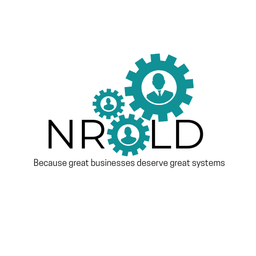How to Structure Equity or Profit Sharing for Early Team Members
To attract the best talent, you often need to offer more than just a salary, especially when cash is tight. This is where equity and profit sharing come in. But how do you structure this?

Bringing on your first employees is a huge milestone for any startup. These early team members are not just workers; they are taking a big risk on your vision. They are your co-builders. To attract the best talent, you often need to offer more than just a salary, especially when cash is tight. This is where equity and profit sharing come in.
But how do you structure this? Do you give away pieces of the company (equity), or do you share the profits you make (profit sharing)? Making the right choice is critical. This guide provides a step-by-step framework to help you decide on the right model and implement it fairly and effectively.
Step 1: Choose Your Path: Equity (Ownership) vs. Profit Sharing (Rewards)
The first and most important decision is to choose the model that fits your business type and your long-term goals.
Path A: Equity (Giving Away Ownership)
- What it is: Equity means giving employees a small ownership stake in your company, usually through stock options. They get the right to buy shares in the future at a pre-set low price. The value of their equity grows as the company grows.
- Best for: High-growth startups. These are companies that plan to raise money from venture capitalists (VCs) and eventually get acquired or go public (IPO). For these businesses, the real financial reward is in the final "exit."
- Pros: It is a powerful tool to attract top talent. It creates a long-term mindset, and the potential financial upside can be life-changing.
- Cons: It is legally complex to set up. It dilutes the founders' ownership. The value is not guaranteed; it is only worth something if the company has a successful exit.
Path B: Profit Sharing (Sharing in the Success)
- What it is: Profit sharing is a bonus plan where you distribute a portion of the company's profits to your employees in cash.
- Best for: Businesses that are focused on long-term profitability, not a big exit. This includes many service businesses, creative agencies, and successful small businesses (often called "lifestyle businesses").
- Pros: It is simple to understand and easy to set up. It rewards employees for the company's current performance with real cash.
- Cons: It does not create a long-term ownership mentality. The payouts can be unpredictable, and it might not attract talent looking for a massive "get rich" opportunity.
How to Decide: A Simple Checklist
- Is your main goal a massive exit (selling the company or IPO)? -> Choose Equity.
- Is your main goal to build a sustainable, profitable business you run for a long time? -> Choose Profit Sharing.
- Are you trying to compete with venture-backed startups for talent? -> Choose Equity.
- Do you want to reward your team directly for a great year? -> Choose Profit Sharing.
Step 2: How to Structure Equity for Your Team
If you chose the equity path, you need a solid framework. A messy equity structure is a huge red flag for future investors.
1. Create an Employee Stock Option Pool (ESOP).
An ESOP is a block of company stock that you set aside specifically for employees. Think of it as your hiring budget for equity.
- How much? The industry standard is to create a pool that is 10% to 20% of the company's total shares.
- Example: If your company has 1,000,000 total shares, you would set aside 100,000 to 200,000 shares for your ESOP. When you grant options to a new hire, they come from this pool.
2. Implement a Vesting Schedule (This is a must-do).
Vesting means that employees earn their equity over a period of time. It protects the company from someone joining, getting a huge chunk of equity, and leaving a few months later.
- The Standard: The most common structure is a four-year vesting schedule with a one-year cliff.
- How it works:
- The "Cliff": The employee gets no equity for the first 12 months. On their one-year anniversary, they are "at the cliff," and 25% of their total options vest (become available to them).
- After the Cliff: The remaining 75% of their options vest in smaller chunks every month for the next three years.
- Example: You hire a new engineer, Maria, and grant her 12,000 stock options.
- If Maria leaves after 11 months, she gets 0 options.
- On her one-year anniversary, 3,000 options vest instantly.
- For the next 36 months, she will vest an additional 250 options each month.
3. Decide How Much Equity to Give.
This is tricky, but there are general guidelines based on the employee's role and how early they are joining. The earlier an employee joins, the more risk they take, so they typically receive more equity.
- Very rough guidelines for early-stage startups:
- First 1-10 Employees (Engineers, Designers, etc.): 0.5% - 2%
- Senior Leaders (VP or C-Suite): 1% - 5%
- Later Employees (11-50): 0.1% - 0.5%
- Remember: These are stock options. Employees get the right to buy the stock at a low price (the "strike price"), which is set when they are hired. They are not free shares.
Step 3: How to Structure a Profit-Sharing Plan
If you chose the profit-sharing path, your focus is on clarity and fairness.
1. Decide What Percentage of Profits to Share.
There is no magic number. A common range is to share between 10% and 30% of the company's net profits. Before you calculate this, make sure the company has paid all its expenses and taxes and has set aside enough cash to reinvest in growth.
- Example: Your agency made $500,000 in revenue. After all expenses, taxes, and reinvestment funds, your net profit for the year is $100,000. You decide to share 20% of that profit. The profit-sharing pool for your team is $20,000.
2. Choose How to Distribute the Pool.
There are a few fair ways to divide the profit-sharing pool among your team members.
- An Equal Split: Every team member gets the same amount. This is simple and promotes a sense of equality. (In our example, if you have 5 employees, each gets $4,000).
- Based on Salary: The pool is divided based on each employee's base salary. The logic is that those with higher salaries have a greater level of responsibility. (An employee who makes $80,000 a year would get a larger share than one who makes $40,000).
- Based on Tiers or Role: You can create simple tiers. For example, senior staff might split 60% of the pool, while junior staff split the other 40%.
3. Be Transparent and Communicate the Plan Clearly.
The success of a profit-sharing plan depends on your team understanding it. Create a simple one-page document that explains:
- How profits are calculated.
- The percentage that will be shared.
- The method for distribution.
- When the payout will happen (e.g., annually, after the end-of-year books are closed).
Action builds business. Start small, start smart—then scale

This content is AI-assisted and reviewed for accuracy, but errors may occur. Always consult a legal/financial professional before making business decisions. nrold.com is not liable for any actions taken based on this information.


